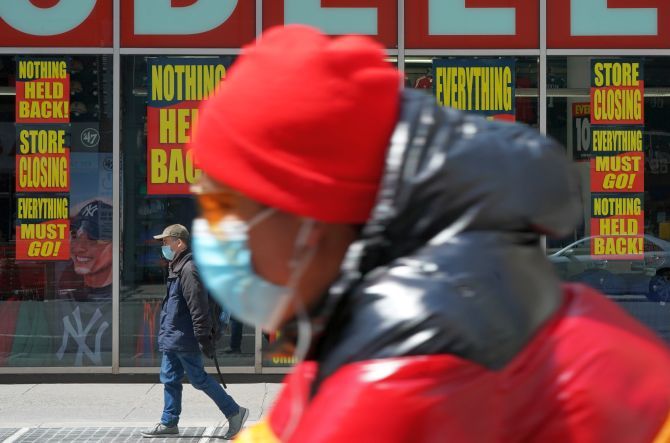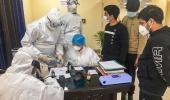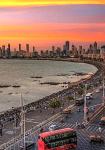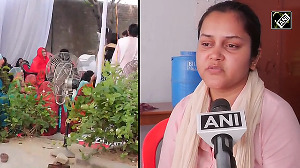People in New York will now be required to wear masks or face coverings in public and in situations where social distancing cannot be maintained, such as on public transportation, to stop the spread of coronavirus as the state sees a flattening of the infection curve, New York Governor Andrew Cuomo has said.

New York, the epicenter of the coronavirus pandemic in the United States, has reported 11,571 additional cases of novel coronavirus on Wednesday, bringing the statewide total to 2,13,779 confirmed cases.
Addressing a press briefing on Wednesday, Cuomo said he will issue an executive order requiring all people in New York to wear a mask in public and the order will go into effect on April 17.
“If you're going to be in public, and you cannot maintain social distancing, then have a mask and put the mask on when you're not in socially distant places… You don't have a right to infect me. If you are
going to be in a situation in public where you may come into contact with other people in a situation that is not socially distanced, you must have a mask or a cloth covering nose and mouth," he said.
As of Wednesday evening 11,586 people had died. Total hospitalisations, ICU admissions and intubations are coming down in the state, which Cuomo said is “good news” and signs that the COVID-19 curve is flattening in New York.
The state lost 752 people on April 14, 707 in hospitals and 45 in nursing homes.
Cuomo said while the death toll is “terrible”, the number of people dying daily has been “flat over the past several of days.”
Cuomo said the Centers for Disease Control and Prevention has changed guidelines on how the death toll is reported by states.
The agency now wants probable deaths, the people presumed to have died because of coronavirus but had never tested positive.
New York City, which has a total of 1,11,424 cases, reported 6,840 confirmed coronavirus deaths.
These were people who had a positive COVID-19 laboratory test.
It reported 4,059 probable deaths, people who did not have a positive COVID-19 laboratory test, but their death certificate lists as the cause of death "COVID-19" or an equivalent.
Cuomo said New York will also be conducting Hydroxychloroquine testing to determine whether it can be used as a treatment for the virus.
“Maybe the Hydroxychloroquine works. Now, this has been a very politicised topic. I have done my best to stay 100 miles away from politics in all of this. Everybody wants to see Hydroxychloroquine work. Well, the president says he believes it works. But he's not a doctor. And anything New York can do to test it, we will. We are now testing Hydroxychloroquine,” Cuomo said.
He said that there are a number of hospitals that are testing Hydroxychloroquine.
“It's not a government decision. It's not a political decision. A medical doctor decides. And if a medical doctor decides it works, fine. We have an executive order that limits the prescription of hydroxychloroquine only because we don't have enough. And there was such a demand on it that people who needed it and were using it can't get it.”
He said if the federal government sends the state more supplies of Hydroxychloroquine, it will dispense more.
“It's a pure supply side issue. Or maybe they develop another drug that they figure out has an effect. That could happen between now and the vaccine. And we all pray that it does.”
Cuomo also announced the state will begin conducting antibody tests, prioritizing frontline health care workers, first responders and other essential workers, beginning this week.
Using a new finger prick method the state will test up to 2,000 New Yorkers per day. The state is also asking the FDA for expedited approval of a finger prick antibody test that could test up to 100,000 New
Yorkers a day. New York will give also give 100 ventilators to Michigan and 50 ventilators to Maryland.
"As we continue to flatten the curve and slow the infection rate of the virus we have to build a bridge from where we are now to the reopening of the economy, and the single best tool to do that is large scale testing," Cuomo said.
"We have done more tests than any other state in the nation -- more than 500,000 in over a one-month period -- but we need to do more and we need the help of the federal government to get people back to work and begin our return to a new normal.











 © 2025
© 2025